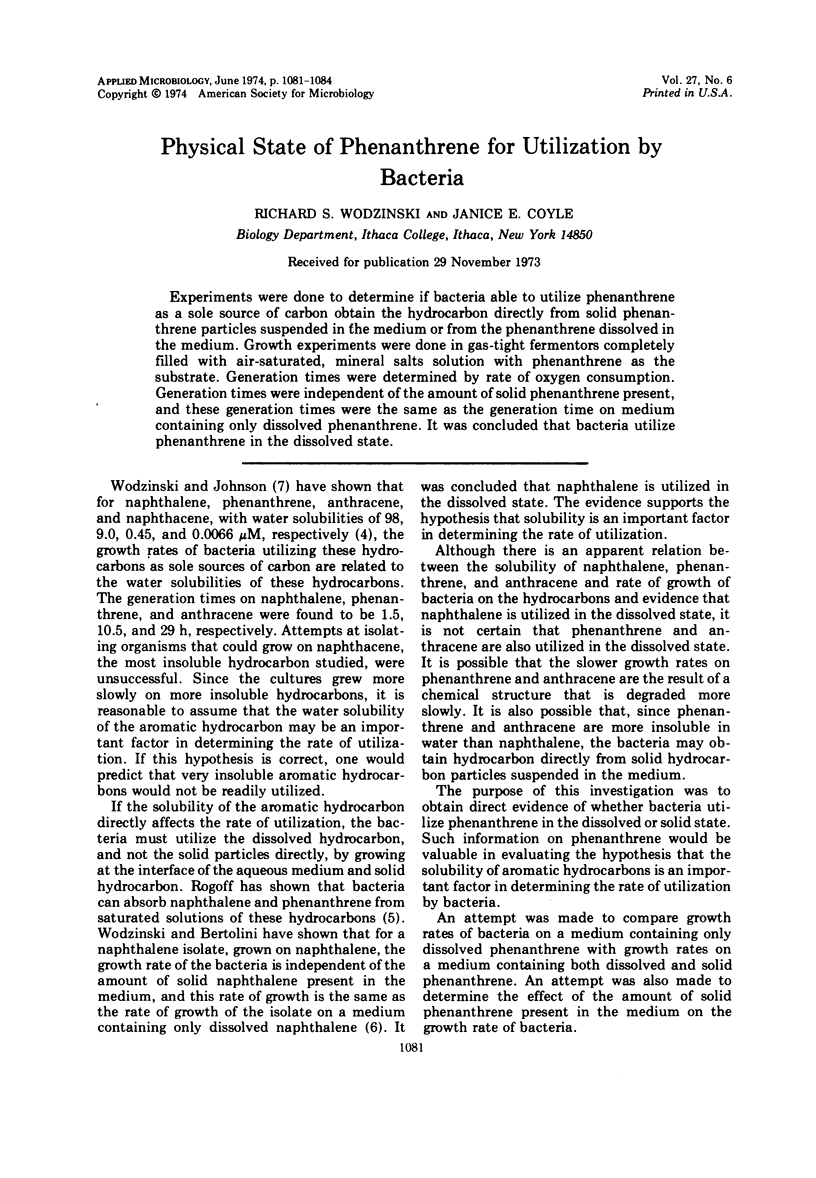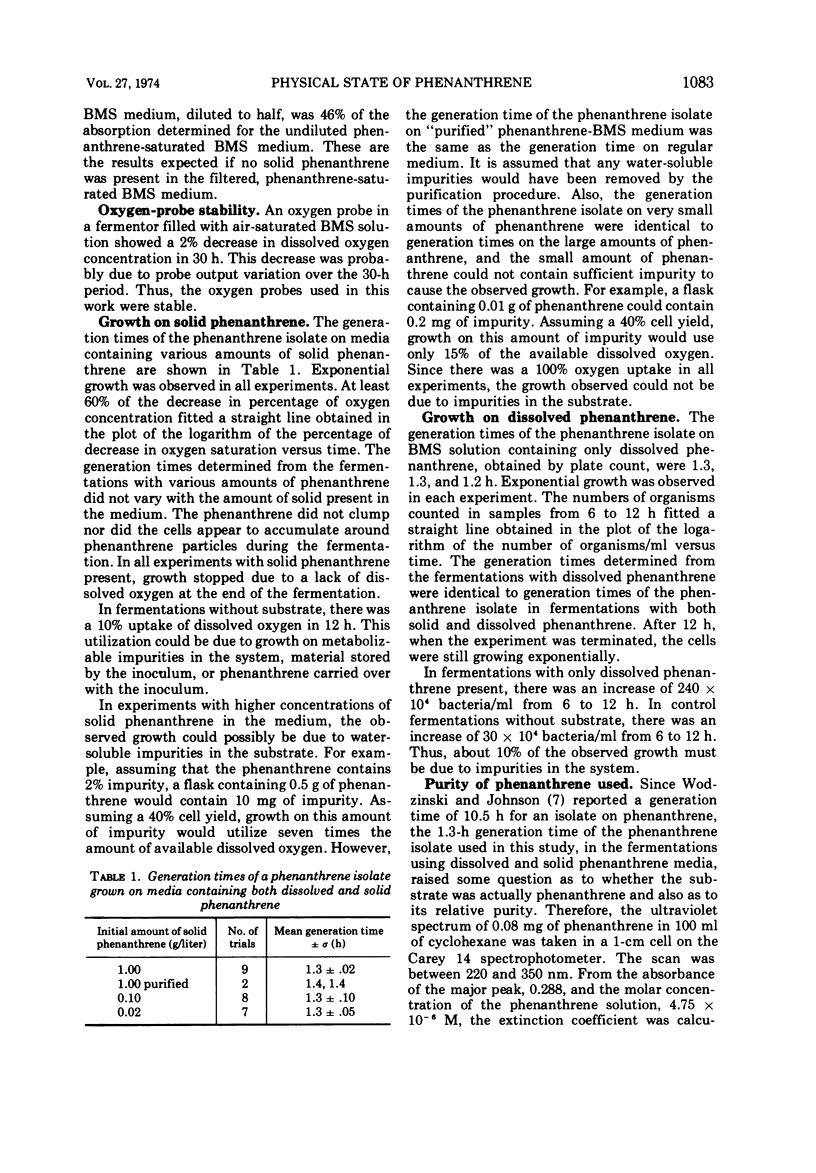Abstract
Experiments were done to determine if bacteria able to utilize phenanthrene as a sole source of carbon obtain the hydrocarbon directly from solid phenanthrene particles suspended in the medium or from the phenanthrene dissolved in the medium. Growth experiments were done in gas-tight fermentors completely filled with air-saturated, mineral salts solution with phenanthrene as the substrate. Generation times were determined by rate of oxygen consumption. Generation times were independent of the amount of solid phenanthrene present, and these generation times were the same as the generation time on medium containing only dissolved phenanthrene. It was concluded that bacteria utilize phenanthrene in the dissolved state.
Full text
PDF



Selected References
These references are in PubMed. This may not be the complete list of references from this article.
- ROGOFF M. H. Chemistry of oxidation of polycyclic aromatic hydrocarbons by soil pseudomonads. J Bacteriol. 1962 May;83:998–1004. doi: 10.1128/jb.83.5.998-1004.1962. [DOI] [PMC free article] [PubMed] [Google Scholar]
- Wodzinski R. S., Bertolini D. Physical state in which naphthalene and bibenzyl are utilized by bacteria. Appl Microbiol. 1972 Jun;23(6):1077–1081. doi: 10.1128/am.23.6.1077-1081.1972. [DOI] [PMC free article] [PubMed] [Google Scholar]
- Wodzinski R. S., Johnson M. J. Yields of bacterial cells from hydrocarbons. Appl Microbiol. 1968 Dec;16(12):1886–1891. doi: 10.1128/am.16.12.1886-1891.1968. [DOI] [PMC free article] [PubMed] [Google Scholar]


